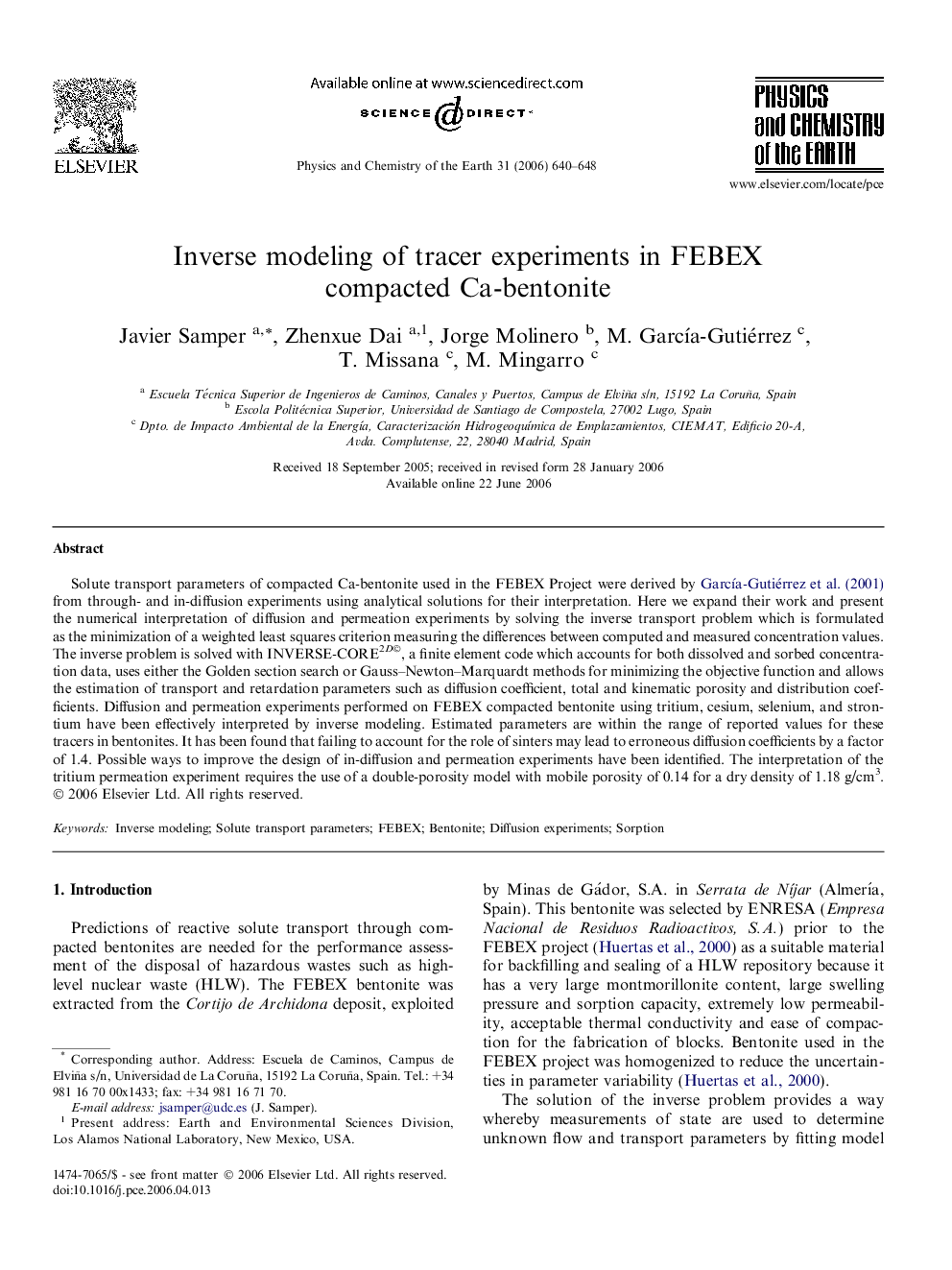| Article ID | Journal | Published Year | Pages | File Type |
|---|---|---|---|---|
| 4722096 | Physics and Chemistry of the Earth, Parts A/B/C | 2006 | 9 Pages |
Abstract
Solute transport parameters of compacted Ca-bentonite used in the FEBEX Project were derived by GarcÃa-Gutiérrez et al. (2001) from through- and in-diffusion experiments using analytical solutions for their interpretation. Here we expand their work and present the numerical interpretation of diffusion and permeation experiments by solving the inverse transport problem which is formulated as the minimization of a weighted least squares criterion measuring the differences between computed and measured concentration values. The inverse problem is solved with INVERSE-CORE2D©, a finite element code which accounts for both dissolved and sorbed concentration data, uses either the Golden section search or Gauss-Newton-Marquardt methods for minimizing the objective function and allows the estimation of transport and retardation parameters such as diffusion coefficient, total and kinematic porosity and distribution coefficients. Diffusion and permeation experiments performed on FEBEX compacted bentonite using tritium, cesium, selenium, and strontium have been effectively interpreted by inverse modeling. Estimated parameters are within the range of reported values for these tracers in bentonites. It has been found that failing to account for the role of sinters may lead to erroneous diffusion coefficients by a factor of 1.4. Possible ways to improve the design of in-diffusion and permeation experiments have been identified. The interpretation of the tritium permeation experiment requires the use of a double-porosity model with mobile porosity of 0.14 for a dry density of 1.18Â g/cm3.
Keywords
Related Topics
Physical Sciences and Engineering
Earth and Planetary Sciences
Geochemistry and Petrology
Authors
Javier Samper, Zhenxue Dai, Jorge Molinero, M. GarcÃa-Gutiérrez, T. Missana, M. Mingarro,
